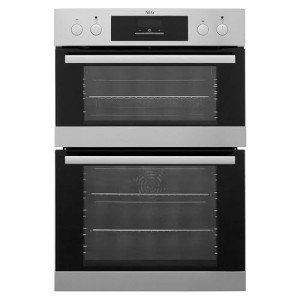Oven Built In: The Good, The Bad, And The Ugly

The Rise of Built-In Ovens: A Seamless Approach to Modern Cooking
In contemporary kitchens, where design aesthetic appeals blend effortlessly with functionality, one device stands apart as a real video game changer: the built-in oven. As builtin ovens and chefs alike continue to look for innovative options that improve their cooking experience, built-in ovens have actually become progressively popular. This article explores the benefits, considerations, and patterns surrounding built-in ovens, highlighting why they are an essential feature in modern cooking spaces.
What is a Built-In Oven?
A built-in oven is a kitchen home appliance designed to be integrated into the cabinets of a cooking area instead of standing alone. Unlike conventional freestanding ovens, which can be moved and positioned anywhere, built-in ovens can be found in numerous styles and sizes to fit specifically within designated areas. Offered in single or double setups, these ovens offer a structured look that matches modern cooking area styles.
Benefits of Built-In Ovens
1. Space-Saving Design
One of the most appealing benefits of built-in ovens is their space-saving style. By incorporating the oven into cabinets, you can free up important counter and flooring space. This is particularly beneficial in smaller cooking areas, where taking full advantage of room is essential. Built-in ovens can be set up at eye level, making them more available and decreasing the need to flex down.
2. Aesthetic Appeal
Built-in ovens contribute to a smooth and cohesive cooking area design. Readily available in different finishes-- such as stainless steel, black, white, and custom cabinets-- they can blend effortlessly into the overall decoration. This aesthetic appeal enhances the kitchen's visual harmony and raises the area, developing a contemporary and advanced environment.
3. Enhanced Functionality
Many built-in ovens come geared up with sophisticated cooking innovations, such as convection cooking, steam ovens, and smart functions. These improvements permit flexible cooking choices, making it easier to attain professional-level results in your home. Smart built-in ovens can even link to Wi-Fi, making it possible for users to manage the oven remotely, get notifications, and access a variety of cooking programs and recipes.
4. Enhanced Ventilation
Since built-in ovens can be integrated with kitchen area hoods and ventilation systems, they can assist preserve better air quality and reduce cooking odors. This is particularly considerable for those who love to cook with aromatic spices and ingredients, as a reliable ventilation system can keep the kitchen area comfortable and inviting.
5. Customization Options
Built-in ovens use a large range of modification options to match individual cooking styles and needs. From professional-grade home appliances with multiple cooking modes to compact designs for smaller kitchens, house owners can pick the oven that fits their particular requirements. Many manufacturers also provide adjustable front panels, allowing you to match the oven's look to your kitchen cabinetry for a genuinely combined look.
Factors to consider When Choosing a Built-In Oven
While built-in ovens have lots of advantages, there are crucial factors to consider to bear in mind before purchasing:
1. Price
Built-in ovens generally include a greater price than their freestanding counterparts due to their design and setup requirements. It's crucial to element in both the expense of the oven and any additional expenditures associated with cabinets modifications or setup.
2. Setup Requirements
Setting up a built-in oven often requires professional assistance, particularly if you require to modify existing kitchen cabinetry. Make sure that you consider any costs connected with installation, consisting of labor and potential cabinets modifications.
3. Size and Dimensions
Before purchasing a built-in oven, measure the designated area accurately to ensure an appropriate fit. Built-in ovens can be found in different sizes and configurations, so selecting one that aligns with your requirements and cooking area design is vital.

4. Lifestyle and Usage
Consider your cooking habits and requires when choosing a built-in oven. If you frequently host large gatherings, a double oven may be more beneficial. On the other hand, if you have a compact kitchen area, a single-wall oven might be sufficient.
Trends in Built-In Ovens
The kitchen home appliance market is continuously evolving, and built-in ovens are not exempt from emerging trends. Some current patterns consist of:
Smart Technology Integration: With the increase of wise home innovation, built-in ovens now typically feature connection alternatives. This permits users to keep track of cooking progress and adjust settings through mobile apps.
Energy Efficiency: As sustainability ends up being a priority, many makers are purchasing energy-efficient built-in ovens that reduce energy consumption while preserving efficiency.
Multi-functional Designs: Built-in ovens now offer features such as air frying, sluggish cooking, and steaming, providing versatility that meets a broad range of cooking approaches.
Conclusion
Built-in ovens undoubtedly represent a best blend of design, function, and benefit in today's kitchen areas. As more property owners choose for this modern solution, the focus moves to producing a cooking space that is as visually pleasing as it is useful. Whether you are constructing a new home or renovating your kitchen, considering a built-in oven could raise your cooking experience and transform your kitchen area into a trendy and functional haven. With an array of alternatives available and continuous developments in technology, built-in ovens stay a standout option for both beginner cooks and culinary lovers alike.
